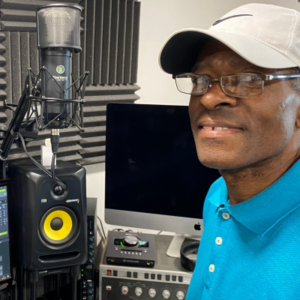Visitors to Quinvy in 1970 included Tony Borders, Buddy Causey and Lynyrd Skynyrd, who came to cut a few demos but also to offer their services as session men. Quin Ivy was not impressed! It didn’t take long for the band to move across to Muscle Shoals Sound Studios to start working with Jimmy Johnson. During that year, further up-grades were made to the recording equipment, bringing an eight-track facility to Quinvy.
By 1971 Quin Ivy was spending more time looking after his other business interests, leaving David Johnson to run the studio on more occasions. Jerry Williams (otherwise known as Swamp Dogg), who had brought Z.Z. Hill back to Quinvy in 1971, soon brought more artists from his Mankind Records roster, helping to boost the studio’s income at a time when Percy Sledge’s success was beginning to tail off.

(used with permission of Ace Records UK)
Doris Duke had teamed up with producer Williams in 1969 to record an excellent album, “I’m a Loser”, at Capricorn Sound Studio, which was released on Canyon Records in 1970. In 1971 they came to Quinvy to record tracks for Duke’s second album, “A Legend in Her Own Time”, with a session band that included Jasper Guarino (drums), Jesse Carr (guitar), Chuck Leavell, and Williams on keyboards, with strings added by the Philadelphia Symphony Orchestra at Regent Sound Studios. Backing vocalists were Charles Chalmers, Sandra Rhodes and Jeanie Greene (Marlin Greene’s wife). The album was released in 1971 on Mankind Records in the USA and on Mojo Records in the UK. In 2013 Ace Records re-issued the album on its Kent Soul imprint.
Brooks O’Dell was next to arrive. He was already an experienced performer who had recorded for several labels before signing for Mankind and coming to Quinvy with Williams. He recorded eleven tracks, with two singles being released in 1971 and 1972. The remaining tracks didn’t see the light of day until the album “I’m Your Man” was released on the UK label Kent Records in 2008.

Brooks O’Dell’s album “I’m Your Man” on Kent Records
(used with permission of Ace Records UK)
The third of the Mankind artists to visit Quinvy in 1971 was Freddie North. He was an experienced singer from Nashville, who had been recording for a variety of small labels without success since 1959. Jerry Williams set out to put that right. North’s first single recorded in the Shoals was “She’s All I Got”, written by Williams and Gary Bonds. The song entered the charts, reaching number ten on the Billboard R&B Singles Chart and number thirty-nine on the Billboard Hot 100 Singles Chart. On the strength of this success, North completed his second album “Friend”, from which another single was released entitled “You and Me Together Forever”. This song also entered the R&B chart, reaching number twenty -six.
North’s single successes helped promote the album, which spent four weeks on the Billboard R&B Albums Chart at the start of 1972. When subsequent singles failed to chart, North ended the arrangement with Williams and concentrated on his business interests. Surprisingly, he returned to the Shoals in 1977 to record another album with David Johnson at the renamed Broadway Sound Studio, which was re-issued in 1989 on UK Charly Records with a new title “I’m Your Man”. These two albums contain some excellent Country Soul songs, including “I’m Your Man” and “If This is the Last Time”.
In 1994, the UK’s Ace Records released a two-album CD combining North’s “Friend” album with Z.Z. Hill’s “The Brand New Z.Z. Hill”, with the title “Swamp Dogg Presents The Brand New Z.Z. Hill/Friend”.
Later visitors included Ernie Shelby, Marlin Greene and Bette Williams. When Quin Ivy decided that he wanted to move away from the music business in 1973, he sold the studio to David Johnson. It was soon renamed and relaunched as Broadway Sound, later to welcome Freddie North, James Govan, Sandra Wright and many others.
Quin Ivy went off to study, gaining a degree in accountancy. In 1980 he started teaching at the University of North Alabama and remained there until his retirement in 1996.
Johnson ran Broadway Sound until 1989, when he was appointed Executive Director of the Alabama Music Hall of Fame, a position he held for over twenty years.

















